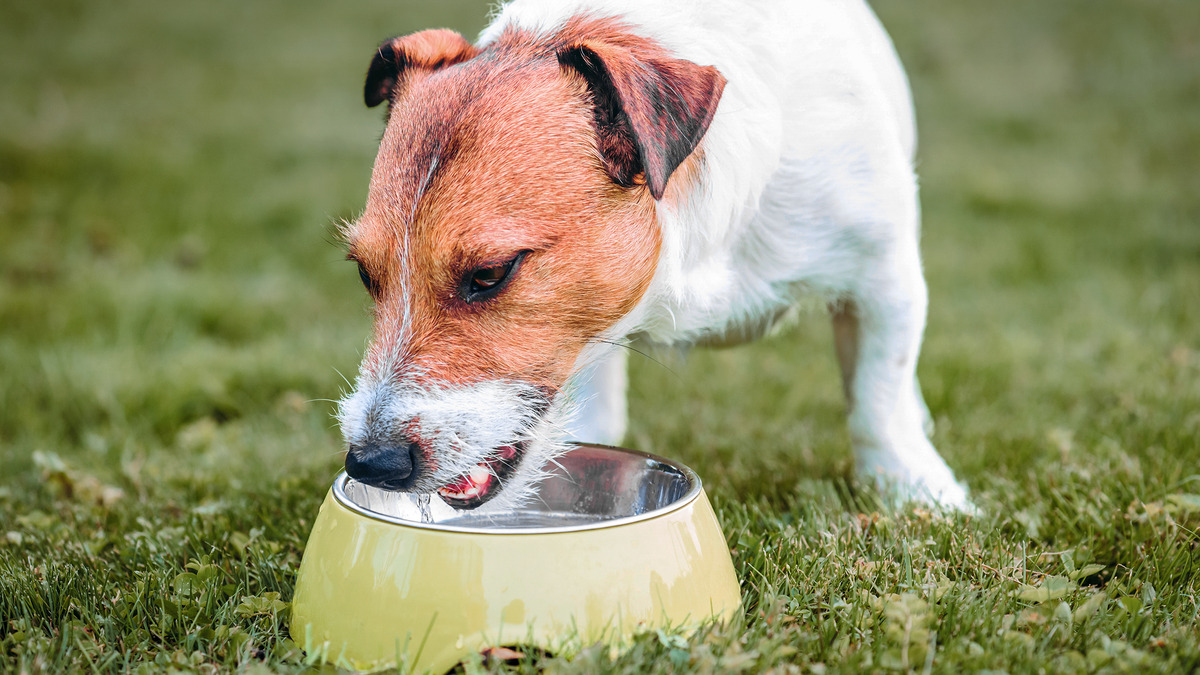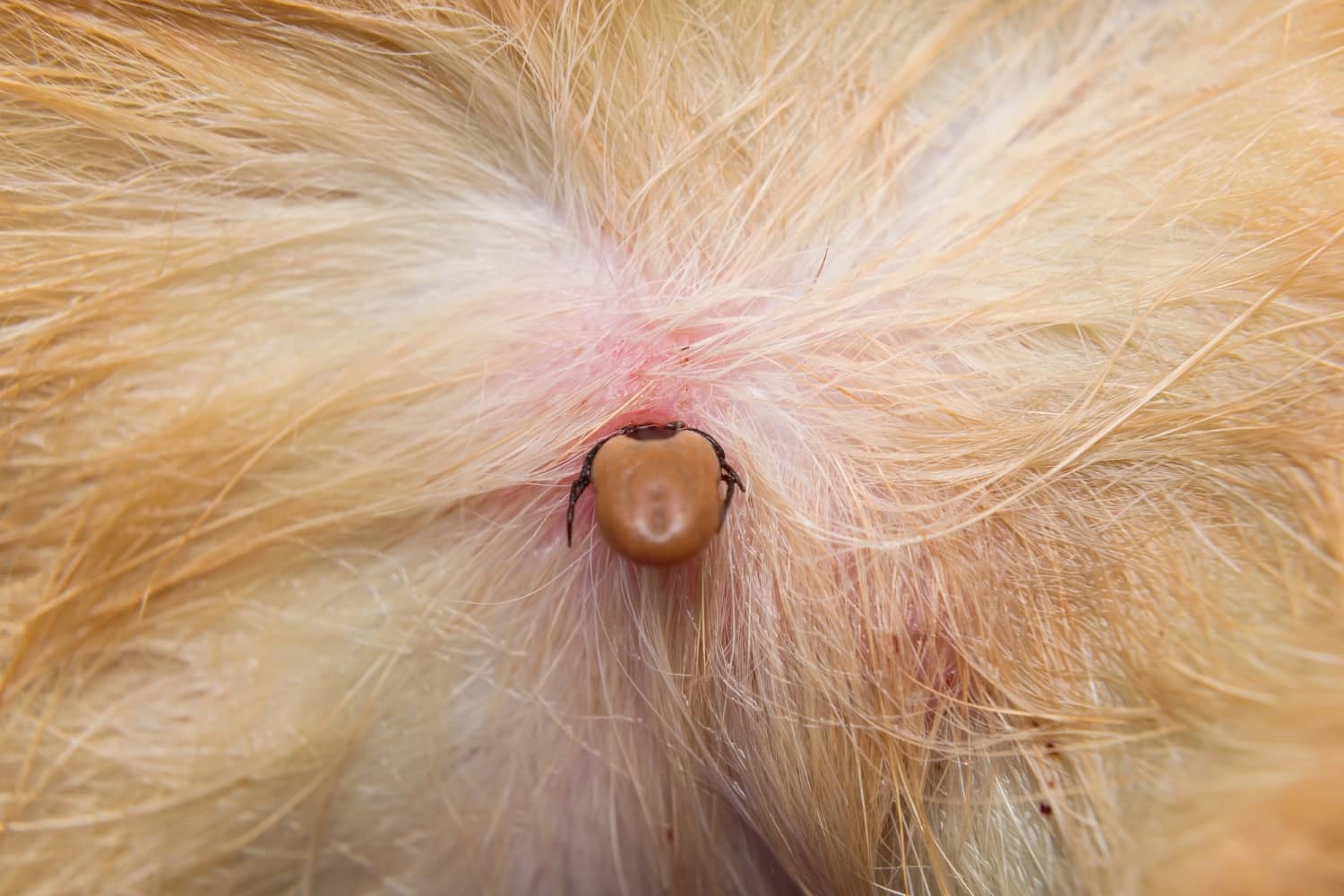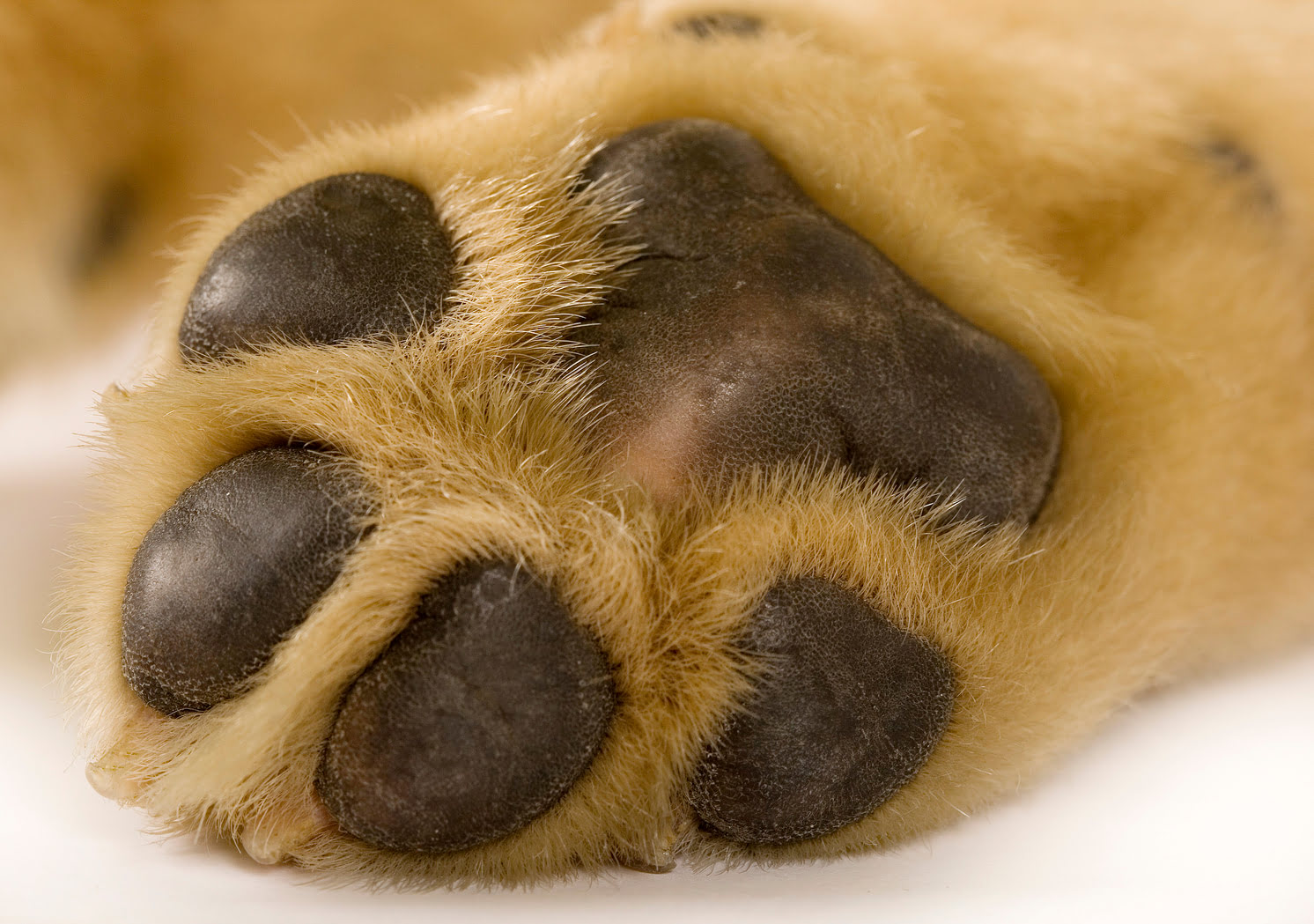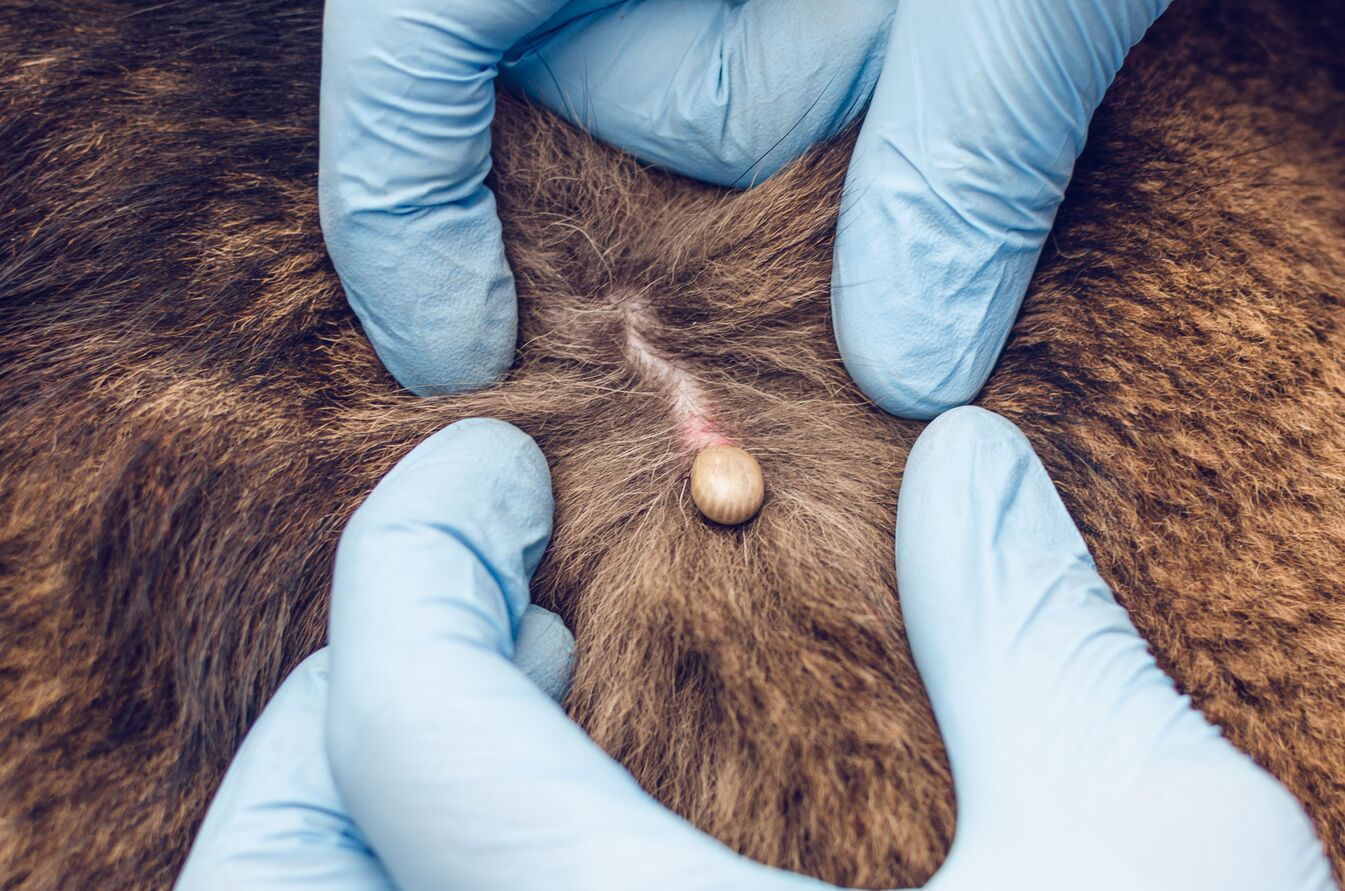Home>Health & Wellness>Nutrition & Diet>Dog Is On A Diet And Looks Hungry: What To Do


Nutrition & Diet
Dog Is On A Diet And Looks Hungry: What To Do
Published: January 30, 2024
Learn how to address your dog's hunger while on a diet. Discover expert tips on nutrition and diet to keep your pet healthy and satisfied.
(Many of the links in this article redirect to a specific reviewed product. Your purchase of these products through affiliate links helps to generate commission for Pawsomeoldies.com, at no extra cost. Learn more)
Table of Contents
- Introduction
- Understanding the signs of hunger in dogs
- Assessing the dog's current diet and feeding schedule
- Consulting with a veterinarian
- Adjusting the dog's diet and portion sizes
- Incorporating healthy snacks and treats
- Implementing regular exercise and activity
- Monitoring the dog's progress and making adjustments as needed
- Conclusion
Introduction
When your furry companion appears to be constantly eyeing the food bowl or giving you those irresistible puppy-dog eyes, it's natural to wonder if they're truly satisfied with their diet. Just like humans, dogs can experience hunger, and as responsible pet owners, it's essential to understand the signs of hunger and take appropriate steps to address any potential issues.
A dog's diet plays a pivotal role in their overall health and well-being. Just as a balanced diet is crucial for humans, it is equally important for our canine friends. However, determining whether a dog is genuinely hungry or simply exhibiting behavioral cues can be challenging. Factors such as breed, age, activity level, and overall health can influence a dog's nutritional needs and appetite.
In this comprehensive guide, we will delve into the various aspects of managing a dog's diet and addressing hunger issues. From understanding the signs of hunger in dogs to assessing their current diet and feeding schedule, we will explore the essential steps to ensure that your beloved pet remains healthy and satisfied. Additionally, we will discuss the significance of consulting with a veterinarian and making necessary adjustments to the dog's diet and portion sizes.
Furthermore, we will shed light on the incorporation of healthy snacks and treats, as well as the importance of regular exercise and activity in a dog's routine. By implementing these strategies, pet owners can effectively monitor their dog's progress and make adjustments as needed to promote optimal health and well-being.
Join us on this insightful journey as we navigate the nuances of managing a dog's diet and addressing hunger-related concerns. By gaining a deeper understanding of these crucial aspects, you can provide your canine companion with the care and attention they deserve, ensuring that they remain content, healthy, and full of energy.
Read more: What Do Parasite Eggs Look Like In Dog Poop?
Understanding the signs of hunger in dogs
Recognizing the signs of hunger in dogs is essential for ensuring their well-being and addressing any potential dietary concerns. While dogs may not express hunger in the same manner as humans, there are several behavioral and physical cues that can indicate a need for nourishment.
Behavioral Cues
- Restlessness and Pacing: A hungry dog may exhibit restlessness, pacing back and forth, and displaying signs of agitation, indicating a desire for food.
- Excessive Vocalization: Some dogs may vocalize their hunger through whining, barking, or persistent attempts to seek attention from their owners.
- Attention-Seeking Behavior: Dogs may become more persistent in seeking attention from their owners, often nudging or pawing in an attempt to communicate their hunger.
Physical Cues
- Gastric Noises: Audible stomach rumbling or gurgling sounds can indicate hunger and an empty stomach.
- Increased Salivation: Dogs may drool more than usual when they are hungry, especially when they perceive the presence of food.
- Seeking Edible Items: A hungry dog may exhibit scavenging behavior, sniffing around for potential food sources or showing interest in non-food items.
Changes in Eating Habits
- Eating Grass: Some dogs may resort to eating grass as a means of alleviating their hunger or discomfort.
- Rapid Consumption of Food: When presented with a meal, a hungry dog may consume it rapidly, displaying eagerness and urgency during feeding.
Read more: What Do Ticks And Fleas Look Like On Dogs
Weight and Body Condition
- Weight Loss: Unintentional weight loss or a noticeable decrease in body condition can be indicative of prolonged hunger or inadequate food intake.
- Lethargy and Weakness: Chronic hunger can lead to decreased energy levels, resulting in lethargy and overall weakness in the dog.
By being attuned to these signs, pet owners can better understand their dog's nutritional needs and take appropriate measures to address hunger-related issues. It's important to note that while these signs can indicate hunger, they may also be attributed to other health concerns. Therefore, a holistic approach to assessing a dog's well-being is crucial, encompassing both dietary considerations and overall health evaluation.
Assessing the dog's current diet and feeding schedule
Assessing a dog's current diet and feeding schedule is a fundamental step in addressing hunger-related concerns and ensuring their overall nutritional well-being. Understanding what and how much a dog is being fed provides valuable insights into their dietary habits and potential areas for improvement.
Evaluating the Nutritional Content
Begin by examining the nutritional content of the dog's food. Check the ingredients list to ensure that the food provides a balanced combination of proteins, carbohydrates, fats, vitamins, and minerals. Look for high-quality, animal-based protein sources and avoid foods with excessive fillers or artificial additives.
Portion Sizes and Feeding Frequency
Next, evaluate the portion sizes and feeding frequency. Consider the dog's age, breed, activity level, and overall health when determining the appropriate portion sizes. Puppies, adult dogs, and senior dogs have varying nutritional requirements, and their portion sizes should reflect these differences. Additionally, assess the frequency of meals to ensure that the dog's feeding schedule aligns with their energy needs and digestive capacity.
Read more: What Do Tick Images On A Dog Look Like
Meal Consistency and Variety
Consistency in meal offerings is crucial for maintaining a balanced diet. Evaluate whether the dog's meals are consistent in nutritional content and portion sizes. Additionally, consider the variety of foods offered to ensure that the dog receives a diverse range of nutrients. Introducing occasional healthy additions, such as vegetables or fruits, can contribute to a more well-rounded diet.
Observing Eating Behavior
Pay attention to the dog's eating behavior during meal times. Note whether they display enthusiasm and interest in their food or exhibit reluctance and disinterest. Additionally, observe their eating pace and whether they exhibit signs of rapid consumption or prolonged pickiness. Understanding the dog's eating behavior provides valuable insights into their satisfaction with the current diet.
Interaction with Treats and Snacks
Assess the frequency and types of treats and snacks offered to the dog. Evaluate the nutritional value of these additions and ensure that they complement the dog's primary diet. Excessive treats or unhealthy snacks can contribute to an unbalanced diet and potentially lead to weight management issues.
By thoroughly assessing the dog's current diet and feeding schedule, pet owners can gain a comprehensive understanding of their pet's nutritional intake and identify areas for potential improvement. This evaluation serves as a crucial foundation for making informed decisions regarding dietary adjustments and ensuring that the dog's nutritional needs are met effectively.
Consulting with a veterinarian
Seeking professional guidance from a veterinarian is an indispensable step in addressing a dog's dietary concerns and ensuring their overall well-being. Veterinarians possess the expertise and knowledge required to assess a dog's health, nutritional requirements, and potential underlying issues that may contribute to hunger-related behaviors. When faced with signs of hunger or uncertainty about a dog's diet, consulting with a veterinarian can provide invaluable insights and tailored recommendations to address the specific needs of the pet.
During a veterinary consultation, pet owners can expect a comprehensive evaluation of the dog's overall health and nutritional status. The veterinarian will consider various factors, including the dog's breed, age, weight, activity level, and any existing health conditions. By conducting a thorough physical examination and potentially recommending additional diagnostic tests, such as blood work or nutritional assessments, the veterinarian can gain a deeper understanding of the dog's unique dietary requirements.
Furthermore, veterinarians can offer personalized dietary recommendations tailored to the dog's specific needs. Whether it involves adjusting the type of food, modifying portion sizes, or addressing potential nutrient deficiencies, the veterinarian's guidance can play a pivotal role in optimizing the dog's diet. Additionally, they can provide insights into the selection of high-quality commercial pet foods or offer guidance on preparing balanced homemade meals, taking into account the dog's individual preferences and dietary sensitivities.
In cases where a dog exhibits abnormal eating behaviors or experiences unexplained weight changes, the veterinarian can investigate potential underlying health issues that may contribute to hunger or altered appetite. By ruling out medical conditions such as gastrointestinal disorders, metabolic imbalances, or hormonal abnormalities, the veterinarian can ensure that the dog's hunger-related concerns are thoroughly addressed.
Moreover, veterinarians can provide guidance on incorporating appropriate supplements or dietary modifications to support the dog's overall health. Whether it involves introducing specific vitamins, minerals, or specialized diets to address unique health considerations, the veterinarian's expertise can guide pet owners in making informed decisions to promote their dog's well-being.
Ultimately, consulting with a veterinarian serves as a crucial step in ensuring that a dog's dietary needs are met effectively. By leveraging the expertise of veterinary professionals, pet owners can gain confidence in managing their dog's diet and addressing hunger-related concerns in a manner that prioritizes the pet's health and happiness.
Read more: What Do Fleas Look Like On My Dog?
Adjusting the dog's diet and portion sizes
Adjusting a dog's diet and portion sizes is a pivotal step in addressing hunger-related concerns and ensuring that the pet receives optimal nutrition. Whether a dog exhibits signs of hunger or requires dietary modifications for weight management, making thoughtful adjustments to their diet can significantly impact their overall well-being.
Evaluating Nutritional Needs
Before implementing any changes to a dog's diet, it is essential to consider their individual nutritional needs. Factors such as age, breed, activity level, and any existing health conditions play a crucial role in determining the appropriate dietary adjustments. For example, puppies have distinct nutritional requirements compared to adult or senior dogs, necessitating tailored adjustments to their diet.
Selecting High-Quality Food
When adjusting a dog's diet, prioritizing high-quality, nutritionally balanced food is paramount. Opt for commercial pet foods that feature animal-based protein sources, essential vitamins and minerals, and limited fillers or artificial additives. Alternatively, if preparing homemade meals for the dog, ensure that the recipes adhere to balanced nutritional guidelines and are free from potentially harmful ingredients.
Modifying Portion Sizes
Carefully assessing and modifying portion sizes is essential for aligning the dog's food intake with their energy needs and body condition. For dogs requiring weight management, adjusting portion sizes to facilitate gradual, healthy weight loss can be beneficial. Conversely, active or working dogs may require increased portion sizes to support their energy expenditure.
Considering Feeding Frequency
In addition to portion sizes, the frequency of meals should be evaluated when adjusting a dog's diet. Some dogs may benefit from multiple smaller meals throughout the day, while others may thrive on a traditional feeding schedule. Tailoring the feeding frequency to the dog's digestive capacity and energy requirements can contribute to improved satisfaction and overall well-being.
Monitoring and Adaptation
After implementing adjustments to the dog's diet and portion sizes, diligent monitoring is crucial. Observing the dog's response to the changes, including their eating behavior, energy levels, and overall satisfaction, provides valuable insights into the effectiveness of the modifications. Based on the observed outcomes, further adaptations to the diet and portion sizes can be made to ensure that the dog's nutritional needs are met optimally.
By thoughtfully adjusting a dog's diet and portion sizes, pet owners can address hunger-related concerns, support weight management goals, and promote the pet's overall health and vitality. With a focus on individualized nutritional considerations and attentive monitoring, these adjustments can contribute to a balanced and satisfying diet for the beloved canine companion.
Incorporating healthy snacks and treats
Introducing healthy snacks and treats into a dog's diet can play a significant role in enhancing their overall nutritional intake and providing additional enjoyment. When carefully selected and incorporated in moderation, these supplementary food items can contribute to a more varied and balanced diet for dogs, while also serving as a means of bonding and positive reinforcement.
Selecting Nutrient-Rich Options
When choosing healthy snacks and treats for dogs, prioritizing nutrient-rich options is essential. Opt for treats that are formulated with high-quality ingredients, free from excessive fillers, artificial additives, and unnecessary preservatives. Look for treats that feature wholesome sources of protein, such as lean meats or fish, and incorporate beneficial nutrients such as omega-3 fatty acids, vitamins, and minerals.
Read more: What Minerals Do Dogs Need In Their Diet
Incorporating Fruits and Vegetables
Incorporating fruits and vegetables into a dog's snack repertoire can provide valuable vitamins, fiber, and antioxidants. Certain fruits, such as blueberries, apples, and bananas, offer natural sweetness and essential nutrients. Similarly, vegetables like carrots, green beans, and sweet potatoes can serve as crunchy, low-calorie treats that contribute to a well-rounded diet.
Utilizing Functional Treats
Functional treats, designed to address specific health concerns or provide additional benefits, can be valuable additions to a dog's diet. Treats formulated to support dental health, joint mobility, or skin and coat condition can serve as targeted supplements to the dog's primary diet, promoting overall well-being in a convenient and enjoyable form.
Moderation and Portion Control
While incorporating healthy snacks and treats, it is crucial to practice moderation and portion control. Overindulgence in treats can lead to an unbalanced diet and potential weight management issues. By carefully monitoring the frequency and portion sizes of treats, pet owners can ensure that these supplementary items complement the dog's primary diet without overshadowing essential nutritional intake.
Bonding and Training Opportunities
In addition to nutritional benefits, healthy snacks and treats offer valuable opportunities for bonding and positive reinforcement. Using treats during training sessions can reinforce desired behaviors and strengthen the bond between the dog and their owner. Furthermore, interactive treat-dispensing toys can provide mental stimulation and enrichment, promoting a healthy and active lifestyle.
Read more: What Does Pumpkin Do For My Dog’s Diet
Consultation with a Veterinarian
Before introducing new snacks and treats into a dog's diet, consulting with a veterinarian can provide insights into the most suitable options based on the dog's individual nutritional needs and health considerations. Veterinarians can offer guidance on selecting treats that align with the dog's dietary requirements and address any potential sensitivities or allergies.
By thoughtfully incorporating healthy snacks and treats into a dog's diet, pet owners can enhance the nutritional diversity and enjoyment of their canine companions while promoting overall health and well-being. With a focus on quality, moderation, and mindful selection, these supplementary items can contribute to a balanced and fulfilling diet for dogs, enriching their lives and strengthening the bond with their caring owners.
Implementing regular exercise and activity
Regular exercise and physical activity are integral components of a dog's overall health and well-being. In addition to promoting physical fitness, regular exercise contributes to mental stimulation, emotional balance, and behavioral fulfillment for dogs. Implementing a consistent and tailored exercise regimen tailored to a dog's breed, age, and energy level is essential for ensuring their vitality and happiness.
Tailoring Exercise to Breed and Energy Level
Different dog breeds exhibit varying exercise requirements based on their inherent traits and energy levels. High-energy breeds such as Border Collies, Dalmatians, and Retrievers thrive on vigorous activities such as running, fetching, and agility training. On the other hand, smaller or less active breeds may prefer gentler activities such as short walks, interactive play sessions, or indoor enrichment exercises. Understanding a dog's breed-specific needs enables pet owners to tailor their exercise routines effectively.
Incorporating Mental Stimulation
In addition to physical exercise, mental stimulation is crucial for a dog's overall well-being. Engaging activities such as puzzle toys, scent games, and obedience training provide mental challenges that promote cognitive development and prevent boredom. Mental stimulation not only enriches a dog's daily routine but also fosters a sense of accomplishment and contentment.
Read more: What Does A Tick Scab Look Like On A Dog?
Consistent Routine and Variety
Establishing a consistent exercise routine is essential for dogs, as it provides structure and predictability. Regular walks, playtime, and interactive activities should be incorporated into the daily schedule to ensure that the dog receives adequate physical and mental stimulation. Furthermore, introducing variety in exercise routines prevents monotony and encourages the dog to remain engaged and enthusiastic about their activities.
Outdoor Exploration and Socialization
Outdoor exploration and socialization opportunities are vital for a dog's holistic development. Taking dogs to dog-friendly parks, nature trails, or supervised playgroups allows them to experience new environments, interact with other dogs, and engage in natural behaviors such as sniffing, exploring, and socializing. These experiences contribute to a well-rounded and socially adept canine companion.
Monitoring and Adaptation
Observing a dog's response to exercise and activity is crucial for ensuring that the regimen aligns with their needs and preferences. Monitoring the dog's energy levels, enthusiasm during activities, and recovery after exercise provides insights into the effectiveness of the routine. Based on these observations, adjustments can be made to the exercise regimen to optimize the dog's physical and mental well-being.
By implementing a tailored and consistent exercise regimen, pet owners can ensure that their dogs remain physically fit, mentally stimulated, and emotionally fulfilled. Regular exercise not only supports a dog's overall health but also strengthens the bond between the pet and their owner, fostering a fulfilling and active lifestyle for both.
Monitoring the dog's progress and making adjustments as needed
After implementing changes to a dog's diet, exercise routine, and overall care, it is essential to monitor the pet's progress and make necessary adjustments to ensure their continued well-being. Monitoring encompasses various aspects of the dog's health, behavior, and response to the implemented changes, providing valuable insights for ongoing optimization.
Read more: What Does A Dog’s Eye Look Like
Observing Physical Changes
Regular observation of the dog's physical condition is crucial for assessing the effectiveness of dietary and exercise adjustments. Monitoring weight changes, body condition, coat quality, and overall vitality can indicate whether the dog's nutritional and activity needs are being met optimally. Positive physical changes, such as improved muscle tone, healthy weight maintenance, and a glossy coat, signify the success of the implemented regimen.
Assessing Energy Levels and Behavior
Observing the dog's energy levels, behavior, and overall demeanor provides valuable cues regarding their satisfaction and well-being. Increased vitality, enthusiasm during activities, and a balanced, contented disposition indicate that the dog is thriving under the current care regimen. Conversely, signs of lethargy, decreased interest in activities, or behavioral changes may signal the need for adjustments.
Monitoring Eating Behavior
Continued observation of the dog's eating behavior and mealtime enthusiasm offers insights into their satisfaction with the diet. A healthy appetite, consistent eating pace, and positive engagement with meals indicate that the dietary adjustments are aligning with the dog's needs. Conversely, reluctance during meals, changes in eating habits, or signs of digestive discomfort may prompt a reassessment of the diet.
Regular Veterinary Check-ups
Scheduling regular veterinary check-ups allows for professional assessment of the dog's overall health and well-being. Veterinarians can conduct thorough physical examinations, assess nutritional status, and provide insights into the dog's progress. Diagnostic tests, such as blood work and nutritional evaluations, offer objective data to guide further adjustments to the care regimen.
Read more: What Does A Parasite In A Dog Look Like
Adapting to Changing Needs
As dogs age or experience lifestyle changes, their nutritional and activity requirements may evolve. Making proactive adjustments to the diet, portion sizes, exercise routine, and overall care ensures that the dog's changing needs are met effectively. Whether it involves modifying meal plans, introducing new activities, or addressing emerging health considerations, adapting to the dog's evolving needs supports their long-term health and happiness.
By consistently monitoring the dog's progress and remaining attentive to their individual needs, pet owners can make informed adjustments to optimize the pet's well-being. This ongoing commitment to observation, assessment, and adaptation fosters a nurturing and responsive approach to caring for the beloved canine companion.
Conclusion
In conclusion, addressing hunger-related concerns and managing a dog's diet is a multifaceted endeavor that requires attentiveness, knowledge, and a deep understanding of the pet's individual needs. By recognizing the signs of hunger in dogs and assessing their current diet and feeding schedule, pet owners can gain valuable insights into their canine companion's nutritional requirements. Consulting with a veterinarian serves as a crucial step in obtaining professional guidance tailored to the dog's specific health and dietary considerations, ensuring that their well-being is prioritized.
Furthermore, adjusting the dog's diet and portion sizes, incorporating healthy snacks and treats, and implementing regular exercise and activity contribute to a holistic approach to promoting the dog's overall health and satisfaction. These proactive measures, when thoughtfully executed and monitored, can significantly impact the dog's well-being, fostering vitality, contentment, and a strong bond between the pet and their owner.
The ongoing process of monitoring the dog's progress and making necessary adjustments based on their evolving needs ensures that their care regimen remains responsive and tailored to their individual requirements. By remaining attentive to the dog's physical condition, energy levels, eating behavior, and overall demeanor, pet owners can adapt their approach to effectively support the pet's long-term health and happiness.
Ultimately, the journey of managing a dog's diet and addressing hunger-related concerns is a testament to the deep bond between humans and their canine companions. Through informed decision-making, compassionate care, and a commitment to the pet's well-being, pet owners can provide their dogs with the love, attention, and support they need to thrive. By prioritizing the dog's nutritional and emotional needs, pet owners contribute to a fulfilling and enriching life for their beloved furry friends, ensuring that they remain content, healthy, and full of energy for years to come.






